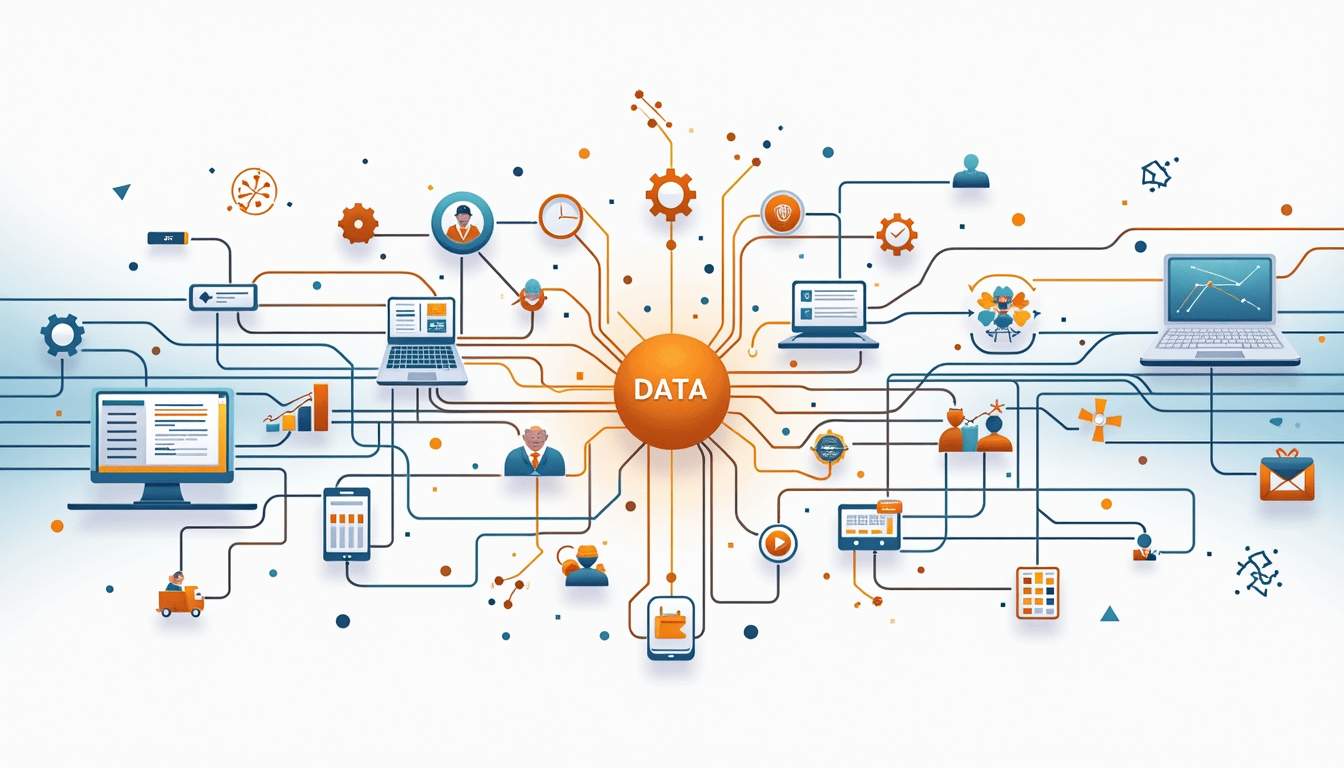
5 Challenges in Data-Driven Attribution
In the ever-evolving landscape of digital marketing, data-driven attribution has emerged as a powerful tool for understanding customer journeys and optimizing marketing strategies. However, like any advanced methodology, it comes with its own set of challenges. This article explores five significant hurdles that marketers face when implementing data-driven attribution models.
1. Data Quality and Integration
One of the foremost challenges in data-driven attribution is ensuring the quality and integration of data from various sources. Marketers often rely on multiple platforms—such as social media, email, and web analytics—to gather insights. However, discrepancies in data formats, tracking mechanisms, and even definitions of key metrics can lead to confusion. The complexity of managing this data landscape increases as organizations scale, making it imperative to establish robust data governance practices that ensure consistency and reliability across all channels.

Inconsistent Data Sources
When data is collected from different sources, inconsistencies can arise. For instance, one platform may track conversions differently than another, leading to conflicting reports. This inconsistency can skew the attribution model, making it difficult to pinpoint which channels are truly driving results. Moreover, the lack of a standardized approach to data collection can result in missed opportunities for optimization, as marketers may be unable to accurately assess the performance of their campaigns. To address this, organizations can implement data normalization techniques that standardize metrics across platforms, thereby creating a more cohesive view of performance.
Data Silos
Another issue is the existence of data silos within organizations. Different departments may use separate systems for tracking performance, resulting in a fragmented view of customer behavior. To overcome this, companies need to foster collaboration between teams and implement unified data management systems. By breaking down these silos, organizations can create a more holistic understanding of the customer journey, allowing for more effective targeting and personalized marketing strategies. Additionally, leveraging advanced analytics tools can help synthesize data from disparate sources, providing actionable insights that drive better decision-making and enhance overall marketing effectiveness.
Furthermore, the integration of machine learning algorithms can play a pivotal role in refining data quality. These algorithms can identify patterns and anomalies in large datasets, enabling marketers to make data-driven adjustments in real-time. As organizations continue to evolve, embracing a culture of data literacy among employees will also be crucial. Training staff to understand data nuances and the importance of quality will empower them to contribute to more accurate data collection and analysis, ultimately leading to more successful attribution strategies.
2. Complexity of Customer Journeys
Today's customers navigate a complex web of touchpoints before making a purchase. From social media ads to email newsletters and website visits, the path to conversion can be convoluted. This complexity poses a significant challenge for data-driven attribution.
Multi-Device Behavior
Customers often switch between devices, which can complicate tracking efforts. A user may see an ad on their smartphone, research the product on their tablet, and finally make a purchase on their laptop. Capturing this multi-device behavior accurately is crucial for effective attribution, yet many systems struggle to do so.
Non-Linear Paths
Moreover, the customer journey is rarely linear. A potential buyer might engage with a brand multiple times over weeks or even months before making a decision. Understanding these non-linear paths requires sophisticated analytics and modeling techniques, which can be daunting for many marketers.
3. Choosing the Right Attribution Model
With various attribution models available—such as first-click, last-click, linear, and time decay—selecting the right one can be overwhelming. Each model has its strengths and weaknesses, and the choice often depends on the specific goals and context of the marketing campaign.
Understanding Model Limitations
Marketers must have a clear understanding of each model's limitations. For instance, last-click attribution might give too much credit to the final touchpoint, overlooking the influence of earlier interactions. Conversely, a linear model may dilute the impact of high-performing channels. Finding a balance that aligns with business objectives is crucial.
Testing and Iteration
Choosing an attribution model is not a one-time decision. Continuous testing and iteration are essential to refine the approach. Marketers need to be prepared to analyze the performance of different models and adjust their strategies accordingly, which can be resource-intensive.
4. The Influence of External Factors
Attribution is not conducted in a vacuum. External factors, such as seasonality, economic shifts, and competitive actions, can significantly influence customer behavior and marketing performance. These factors can complicate the attribution process, making it challenging to isolate the impact of specific marketing efforts.
Seasonal Trends
For instance, during holiday seasons, consumer behavior can change dramatically. A campaign that performs well in October may not yield the same results in December. Marketers must account for these seasonal trends when analyzing data and attributing conversions, which requires a nuanced understanding of market dynamics.
Competitive Landscape
Additionally, the actions of competitors can affect attribution outcomes. If a competitor launches a successful campaign, it may draw attention away from your brand, impacting the effectiveness of your marketing efforts. Keeping an eye on the competitive landscape is essential for accurate attribution.
5. Resource Constraints
Implementing a robust data-driven attribution strategy often requires significant resources—both in terms of technology and human capital. Many organizations struggle to allocate the necessary budget and personnel to effectively manage and analyze attribution data.

Technology Investments
Advanced attribution models often rely on sophisticated analytics tools and platforms. Investing in these technologies can be costly, and smaller businesses may find it challenging to justify the expense. However, without the right tools, the accuracy and effectiveness of attribution efforts can suffer.
Skilled Personnel
Moreover, interpreting attribution data requires skilled personnel who can analyze trends, derive insights, and make data-driven decisions. The shortage of professionals with expertise in data analytics can hinder organizations' ability to implement effective attribution strategies. Training existing staff or hiring new talent can be a lengthy and expensive process.
Conclusion
Data-driven attribution holds immense potential for marketers looking to optimize their strategies and understand customer behavior. However, the challenges outlined above can make the journey complex. By addressing issues related to data quality, customer journey complexity, model selection, external influences, and resource constraints, organizations can enhance their attribution efforts and drive better marketing outcomes.
In the end, overcoming these challenges requires a commitment to continuous learning, collaboration, and adaptation. As the digital landscape evolves, so too must the strategies employed to navigate it. Embracing data-driven attribution is not just about technology; it's about fostering a culture of data literacy and agility within marketing teams.
Understanding the complexities of data-driven attribution is just the beginning. At POP Advertising Partners, we specialize in leveraging high intent buyer data to streamline your marketing efforts and reduce the cost per customer acquisition. If you're ready to tackle the challenges and optimize your paid ads and omnichannel marketing strategies, Let's Chat About Data & How It Can Help Your Business. Together, we can turn data into your most valuable asset.
